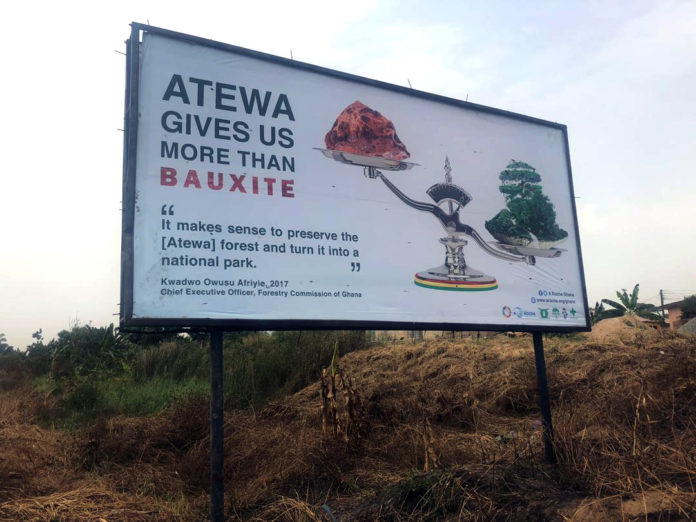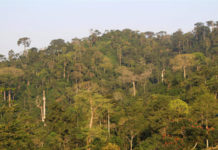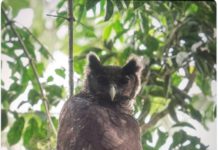Ghana’s Atewa Range Forest, designated by the Government of Ghana as a Globally Significant Biodiversity Area, has from today made it on to the list of the world’s Alliance for Zero Extinction (AZE) sites.
This is a critical new development as Atewa Forest now becomes a ‘No-Go Area’ for mining, strengthening its protection of the species, ecosystem services and livelihoods it supports.
To achieve this reputable global conservation status, the area must contain more than 95 per cent of the entire population of one or more species listed as Endangered or Critically Endangered on the International Union Conservation of Nature (IUCN) Red List of Threatened Species.
The recent discovery of the endemic (found nowhere else in the world) Afia Birago puddle frog in swampy habitats within the summits of Atewa Forest has ensured the forest now holds this highest globally recognized conservation designation – in addition to its existing status as a Key Biodiversity Area (KBA).
The frog is this week being added to the Key Biodiversity Area (KBA) database managed by the KBA Partnership, simultaneously triggering Atewa’s new status as an AZE site.
The Afia Birago puddle frog was discovered by Ghanaian scientist Dr Caleb Ofori-Boateng of the Center for Scientific and Industrial Research (CSIR)-Forestry Research Institute of Ghana, who proudly named it after his mother.
Designated Critically Endangered by the IUCN in 2019, it is found only in very limited habitats within the Atewa Forest, an area now targeted by the government for bauxite mining.
This is a huge threat to the survival of this species.
The central goal of AZE is to prevent any further extinctions of species from the world.
It does this by eliminating threats and where possible restoring habitats at AZE sites so that populations of threatened species can survive.
The Alliance is made up of 93 conservation organizations from 37 countries, and has now identified over 850 sites across the world as AZE sites.
For the Atewa Forest and all the endangered and endemic species living there, the new AZE status is highly significant.
It means that the forest now falls under the International Finance Corporation’s (IFC) No-Go areas for project financing.
The IFC is part of the World Bank Group and is the largest global development institution focused on the private sector in developing countries.
It is owned by 185 member countries that collectively determine its policies.
The IFC’s Performance Standard 6 (IFC PS6) on Biodiversity Conservation and Sustainable Management of Living Natural Resources states that, “Based on the mitigation and management requirements of paragraph 17 of Performance Standard 6, some areas will not be acceptable for financing… They include the following: Sites that fit the designation criteria of the Alliance for Zero Extinction (AZE)”.
The only exception is where a project is specifically designed to contribute to the conservation of the area. Ecotourism or green development initiatives, for example, may fall into this category.
The IFC’s ‘No-Go” criterion is significant because many finance institutions, including the 116 that have signed up to the Equator Principles – an environmental and social risk management framework – and certain international standards for best practices in mining, have incorporated IFC PS6.
This makes Atewa Forest a no-go area for both project finance and project development.






